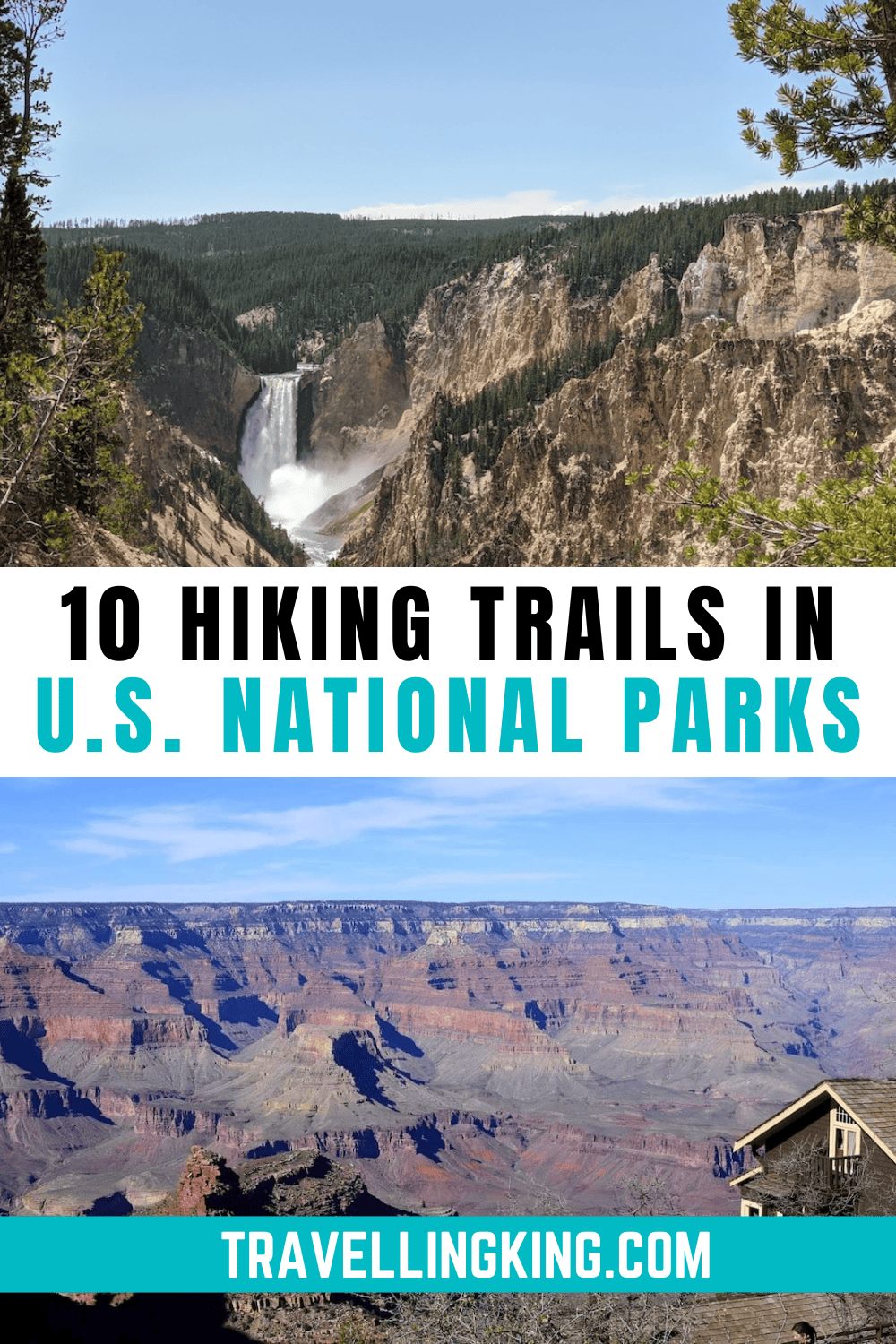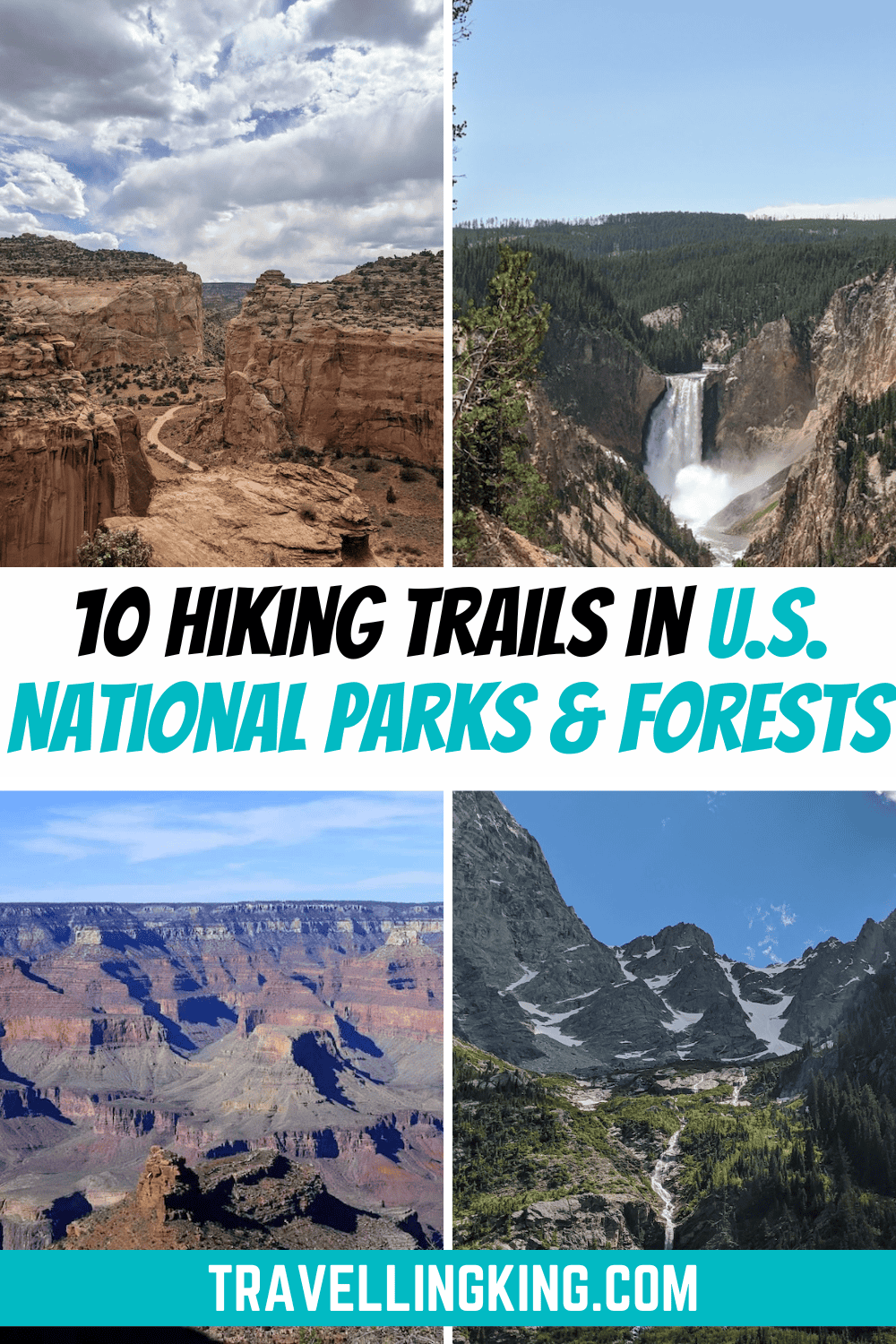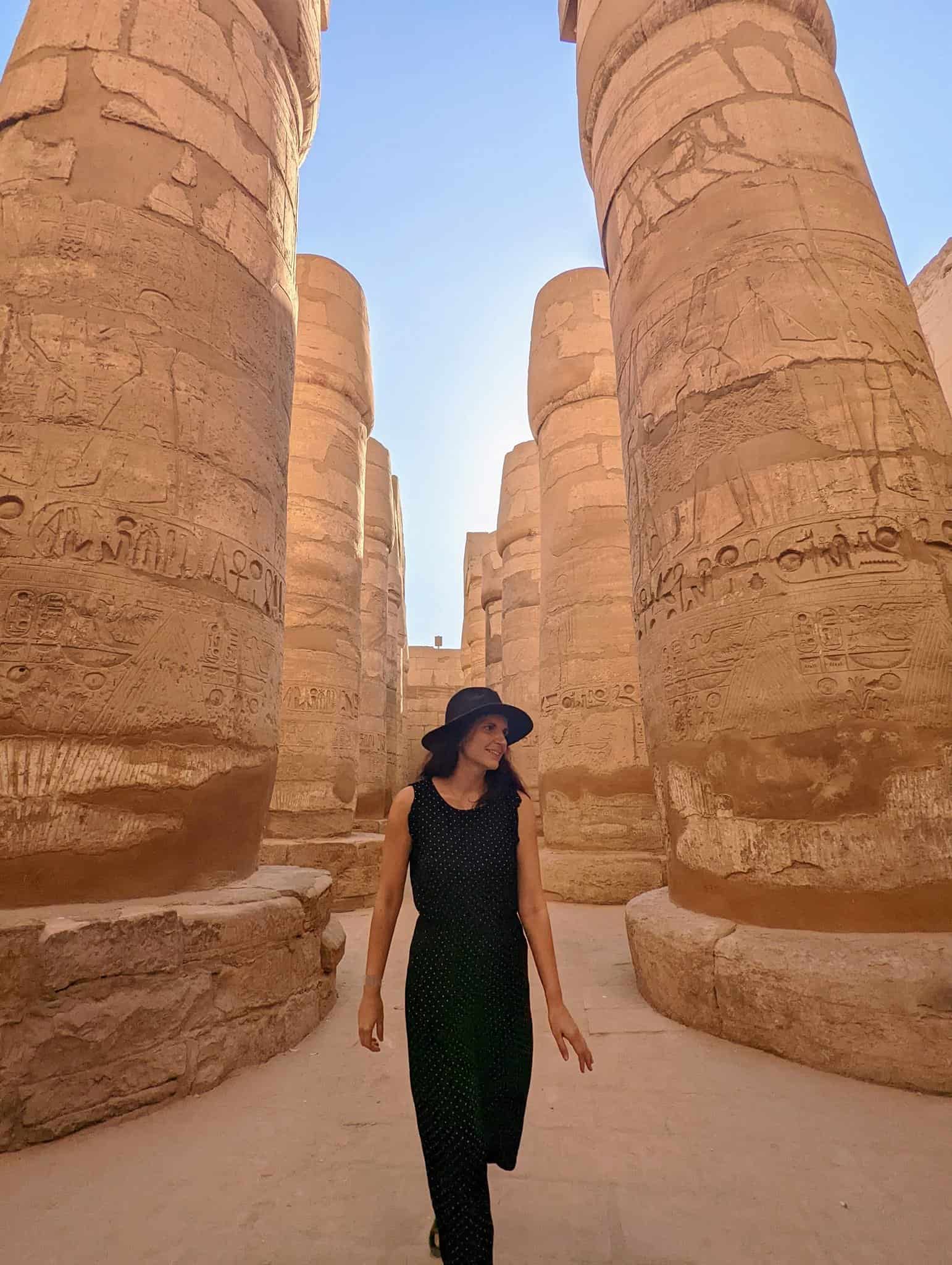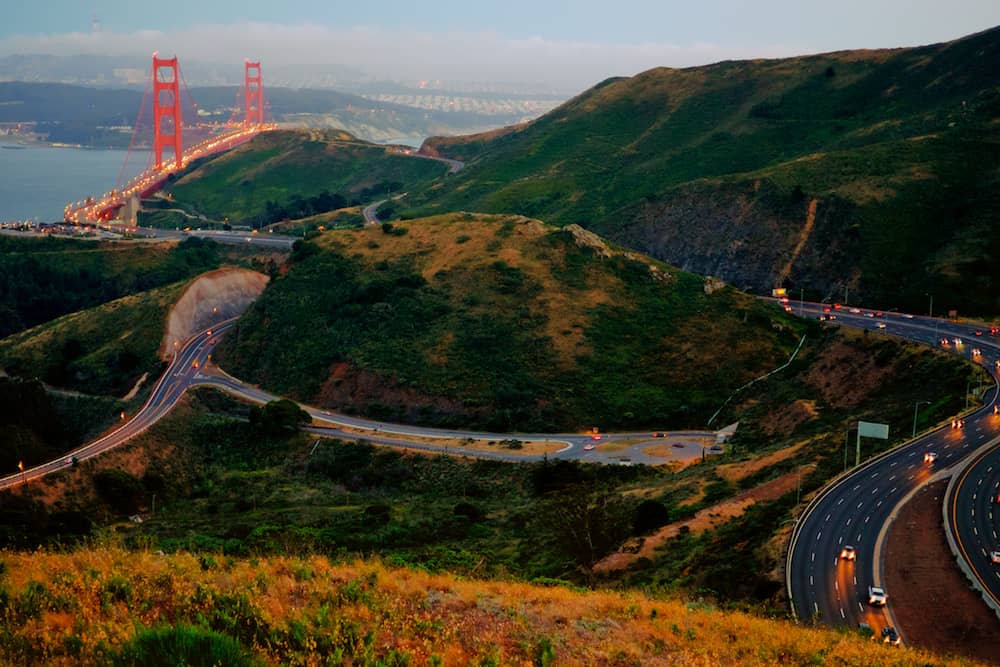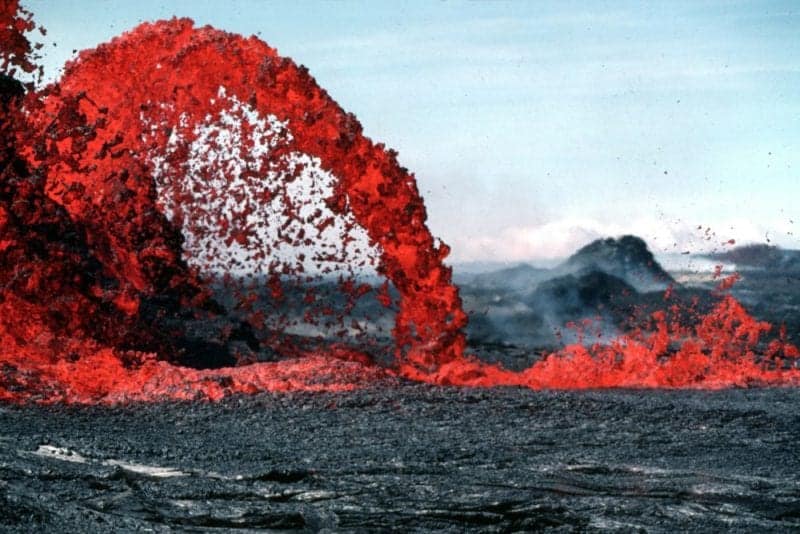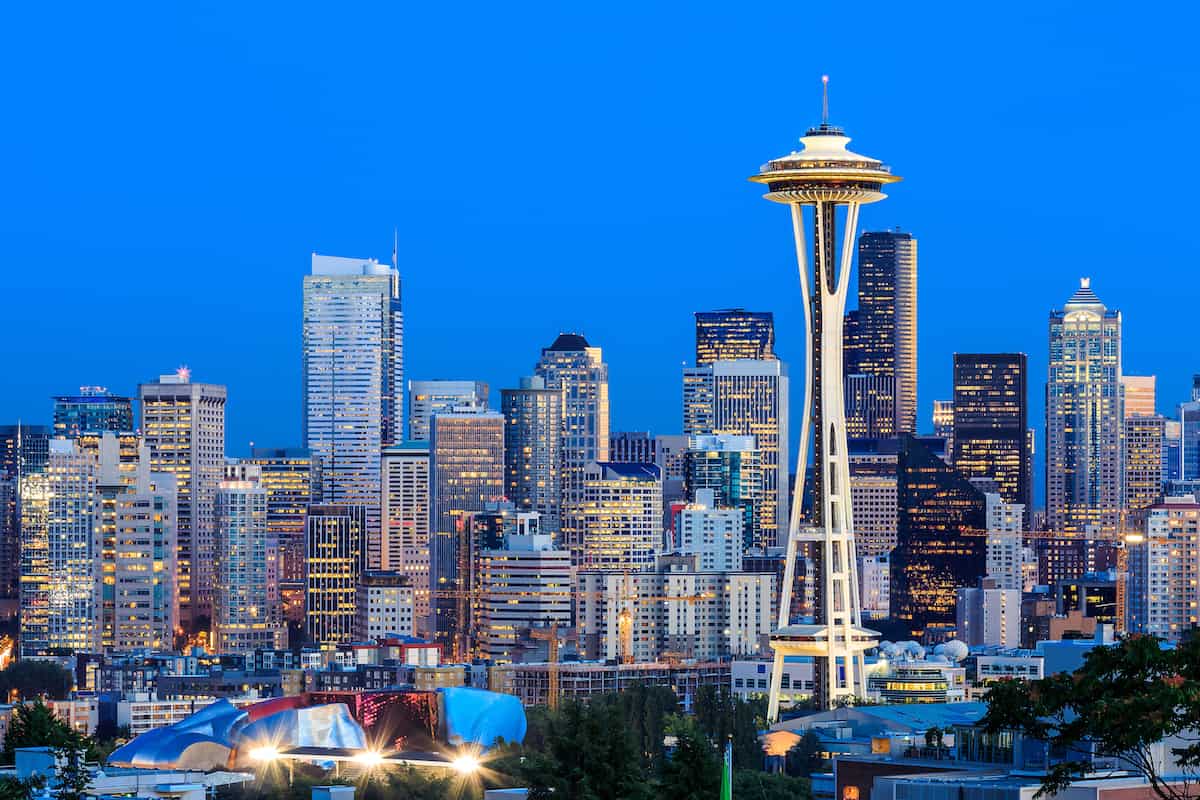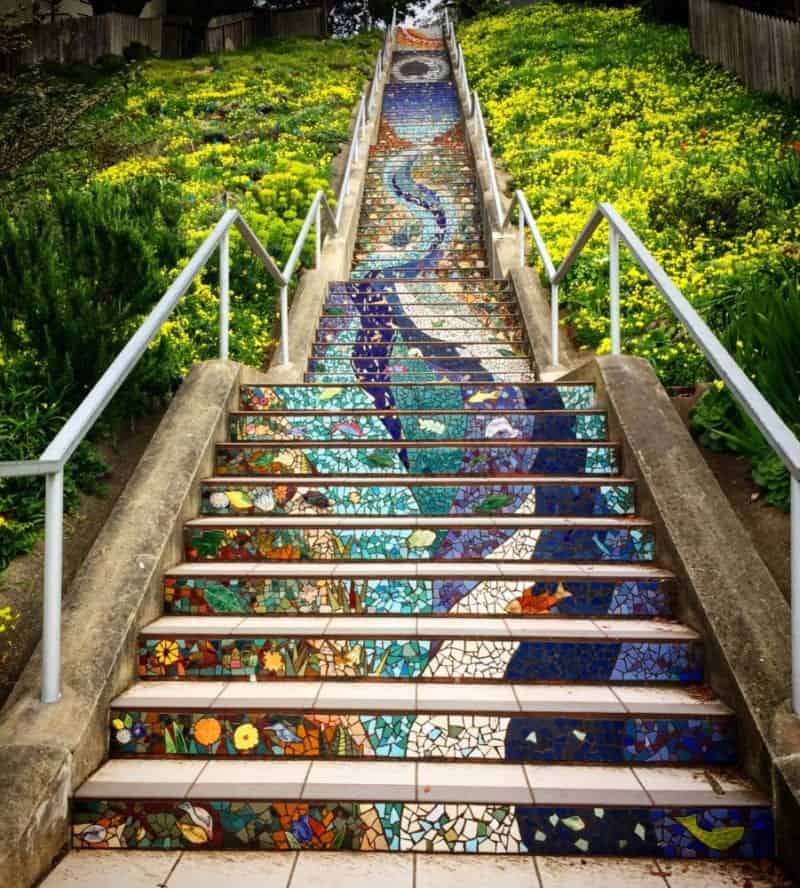10 Best Hiking Trails in U.S. National Parks & Forests
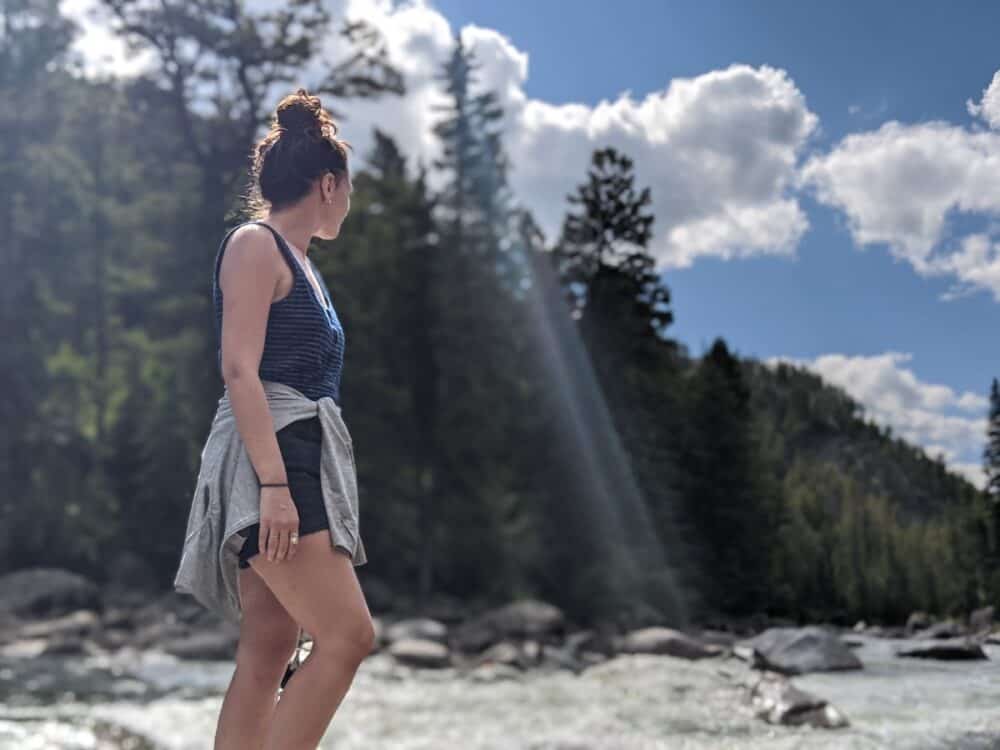
Americans can get a bad rap for never leaving the United States. However, with 21,000 miles (33,800 km) of hiking trails scattered across the national park system, it’s easy to see why it can take a lifetime (or ten) to explore all 62 national parks.
This guide highlights ten of the best hiking trails in the United States for intermediate hikers. From a quick and easy loop to scrambling rocks with 1,000-foot drop-offs, these trails offer views that truly capture the American Spirit of the Old West.
Plan your trip
Save on fees abroad with the Wise Card—use it at ATMs, restaurants, and for flights or hotels in over 150 countries. Manage 40+ currencies in real-time with the Wise app.
Need Help Planning?
- Cheap Flights: Find the best deals.
- Accommodation: From hostels to luxury stays.
- Car Rental: Affordable options worldwide.
- Sightseeing Tours: Explore without breaking the bank.
- Travel Adapter: One adapter for all your needs.
- Travel Insurance: Don’t risk it—stay covered.
This post includes affiliate links. Read my full disclosure and content policy.
Angels Landing – Zion National Park, Utah
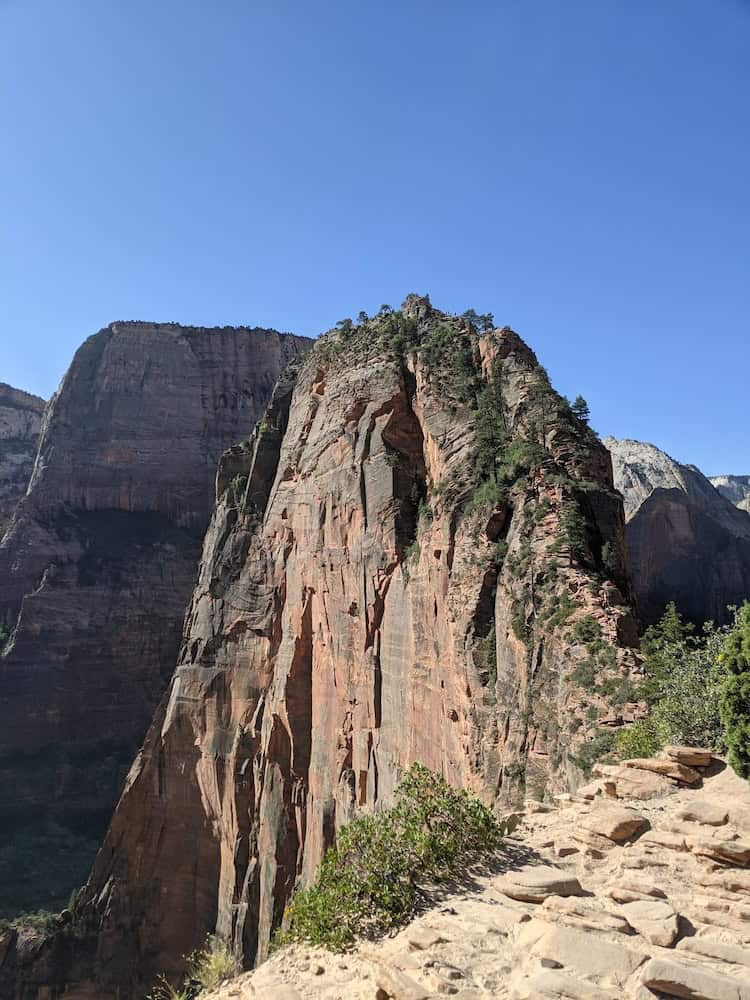
- Length of trail: 5.4 mi/8.7 km
- Difficulty: Strenuous
- Estimated time to complete: 4 hours
Angels Landing is the Jekyll and Hyde of North American hikes. It’s simultaneously one of the most beautiful hikes on the continent and one of the deadliest. According to Dave Nally’s Deaths and Rescues in Zion National Park (2nd Edition), 14 confirmed deaths have occurred on the trail, with a handful more that cannot yet be verified.
The hike has become so popular that Zion National Park launched a permit lottery. If you’re planning a visit to the park, book your permit in advance or risk disappointment.
The beginning of the trail is relatively easy, with a slow and steady incline. However, the thigh-burning fun begins at what is nick-named “Walter’s Wiggles.” Walters Wiggles is a steep elevation gain of 250 feet over 21 switchbacks. Reading that might not sound scary, but in the moment, it’s intense, even for the most in-shape hikers.
Once you’ve completed the Wiggles, you’ll have reached the first summit of Angels Landing. Here, hikers can choose to take in the views, use the outhouse (from which Zion famously removed 5 tons of human waste), or begin the legendary chain section.
The Spine, often referred to as the chain section, is just a short half mile. However, it’s not for the faint of heart. During the finale of this epic hike, visitors will ascend 500 feet along a rocky ridge.
In many parts, the path is only wide enough for one person. On each side of the trail are 800-1,000-foot drop-offs. Hikers must scramble rocks, focus hard, and hold tight to these chained lifelines. Upon completion of the Spine, visitors are rewarded with stunning 360° views of the world-famous Zion Canyon.
Alberta Falls and Bear Lake Trail – Rocky Mountain National Park, Colorado
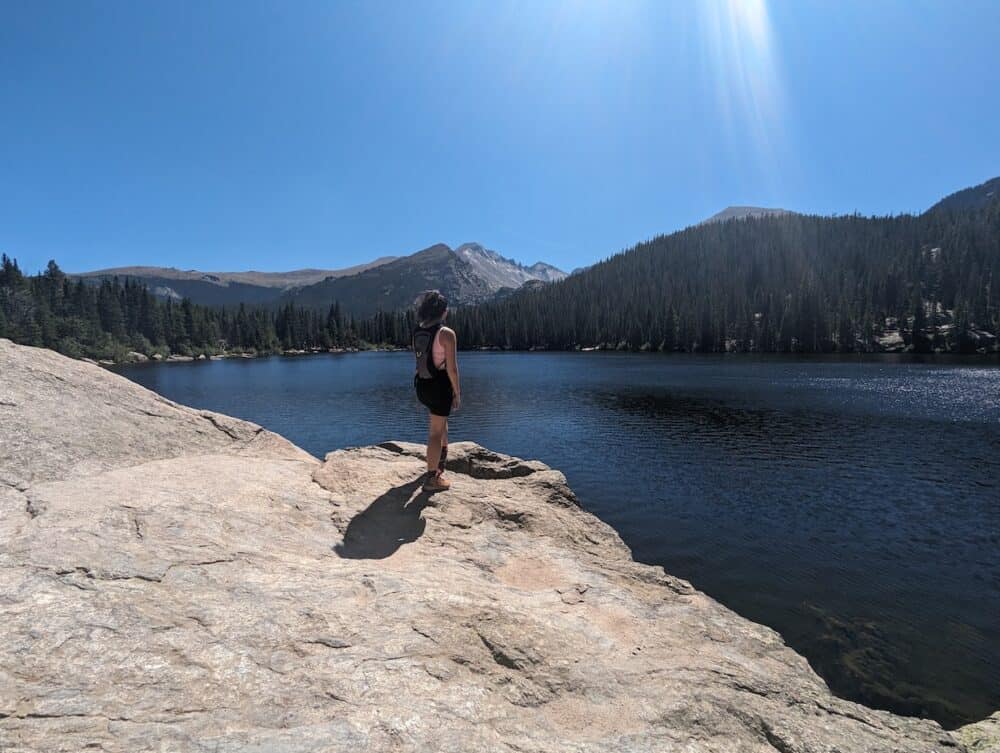
- Length of trail: 2.5 mi/5 km
- Difficulty: Easy
- Estimated time to complete: 1 hour
The Alberta Falls and Bear Lake Trail is one of Rocky Mountain National Park’s most beloved hikes. It’s a simple, family-friendly hike suitable for various fitness levels.
Due to its popularity, visitors to Bear Lake must acquire a specific Park Access+ timed entry permit that grants entry to Bear Lake Road Corridor. Note that this is separate from the standard timed entry permit for the national park.
The trek to the 30-foot Alberta Falls takes hikers through thick forests, small boulders, and babbling creeks. It’s usually very busy, so expect to run into other hikers. If you choose to skip the falls, you can walk the .6-mile wheelchair-accessible loop around the stunning Bear Lake.
The Alberta Falls and Bear Lake Trail provide options for those with accessibility needs while offering a kick of adventure for anyone who wants to climb up to Alberta Falls.
Cascade Canyon Trail – Grand Teton National Park, Wyoming
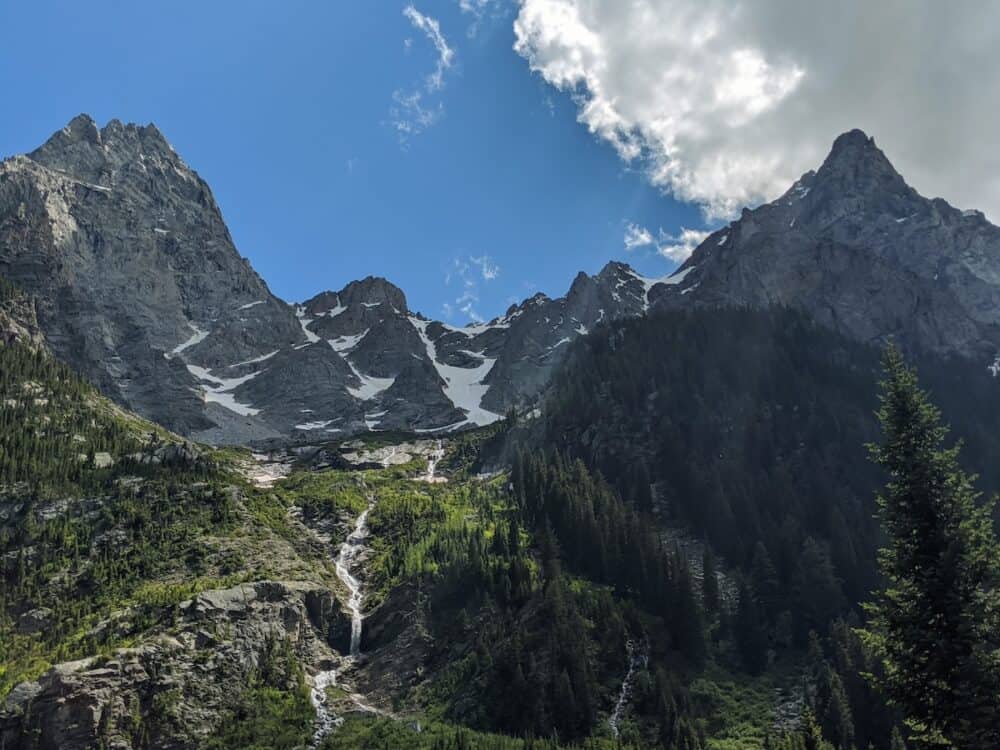
- Length of trail: 9.1 mi/14.6 km
- Difficulty: Moderate
- Estimated time to complete: 5 hours
The Cascade Canyon Trail in Grand Teton National Park is a great option for animal lovers. Many hikers report seeing moose, grizzly bears, and porcupines on their hike.
Most adventurers take a ferry across Jenny Lake to access the trailhead. However, for those feeling particularly ambitious, an easy two-mile walk around the lake is also possible.
While the hike described here is a 9.1-mile out-and-back trail, there are options within and in addition to it. For anyone not quite up to a 9-mile hike, the Hidden Falls viewpoint is only a half-mile from the trailhead, and the Inspiration Point viewpoint is a full mile.
The Cascade Canyon Trail is filled with boulders, waterfalls, wildlife, and unbeatable views underneath the Teton’s shadows. For advanced hikers, some thru-trails continue past the turnaround point of the trail. If this interests you, plan ahead and don’t make this a last-minute decision.
South Rim to Ribbon Lake Loop Trail – Yellowstone National Park, Wyoming
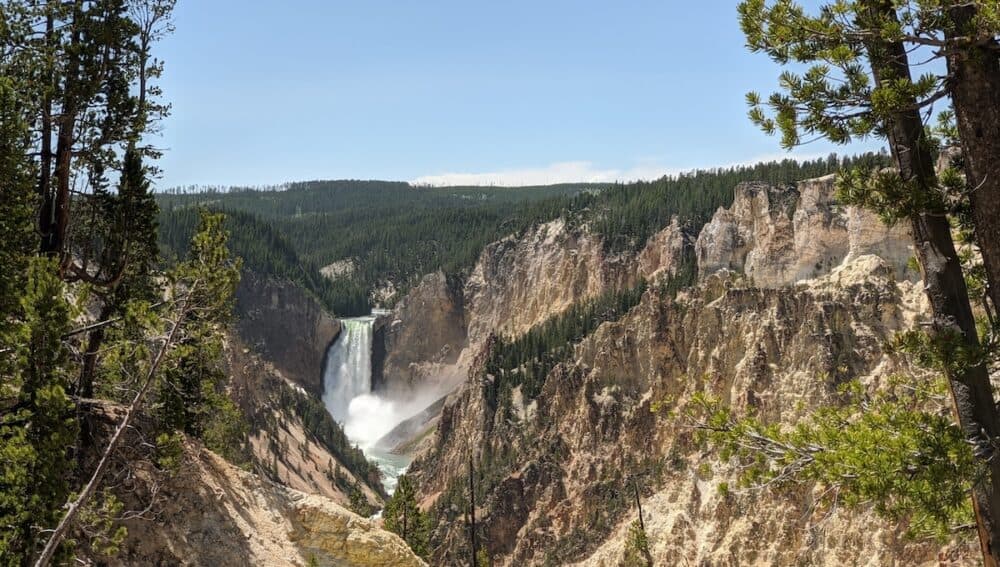
- Length of trail: 8.6 mi/14 km
- Difficulty: Moderate
- Estimated time to complete: 3.5 hours
The South Rim to Ribbon Lake Loop Trail is the ultimate way to taste everything Yellowstone offers in one hike. This trail takes visitors through a wide array of terrain, including canyons, geysers, prairie, and forest.
The hike’s first two miles may initially feel underwhelming, but stick with it. Once you get through the forest, a wide prairie opens up that transports you to the Old West. It’s not uncommon to come face-to-face with a herd of bison (but keep a safe distance!).
The trail leads you from this poetic grassland scene to Ribbon Lake, then to an area resembling Mars. Sulfur fills the air as you navigate around ~198°F (~92°C) thermal pools. Finally, you’ll end at the jaw-dropping viewpoint overlooking the Grand Canyon of Yellowstone.
Unfortunately, Yellowstone has become the Disney of National Parks. However, this little-known trail has remained hidden. The South Rim to Ribbon Lake Loop Trail has preserved Yellowstone in a way few visitors will ever see.
Cassidy Arch Trail – Capitol Reef National Park, Utah
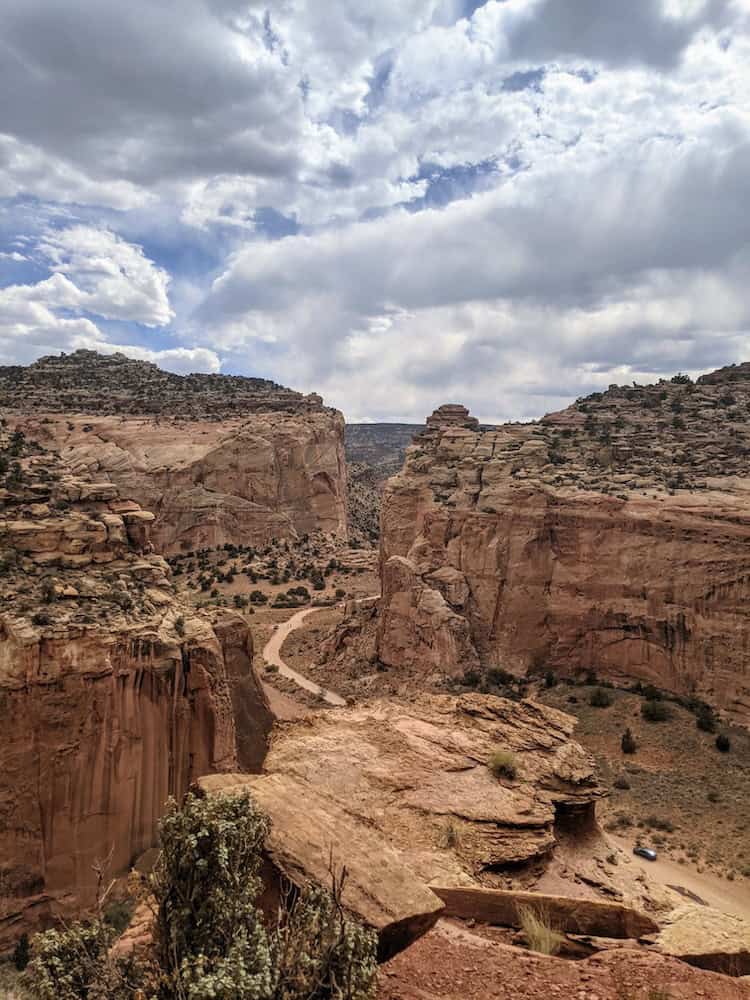
- Length of trail: 3.1 mi/5 km
- Difficulty: Moderate
- Estimated time to complete: 2 hours
Capitol Reef National Park is one of Utah’s “Big Five” but is often overlooked by visitors for its more famous neighbors. However, it’s a true hidden gem on this list.
Despite its short length, the Cassidy Arch Trail packs a lot of punch in its short 3.1 miles. Hikers will tackle nearly a 1,000-foot (30-meter) elevation gain and be rewarded with a jaw-dropping view of Cassidy Arch and the surrounding park.
The trail begins with a steep incline but eventually opens up to a rock face. Once on the rock face, hikers must follow cairns, which are man-made rock formations that designate the trail.
The trail can be slippery, as the area surrounding the arch appears smooth and moon-like. Once at the summit, allow time to explore and enjoy the unbeatable 360° viewpoint.
Delicate Arch Trail – Arches National Park, Utah
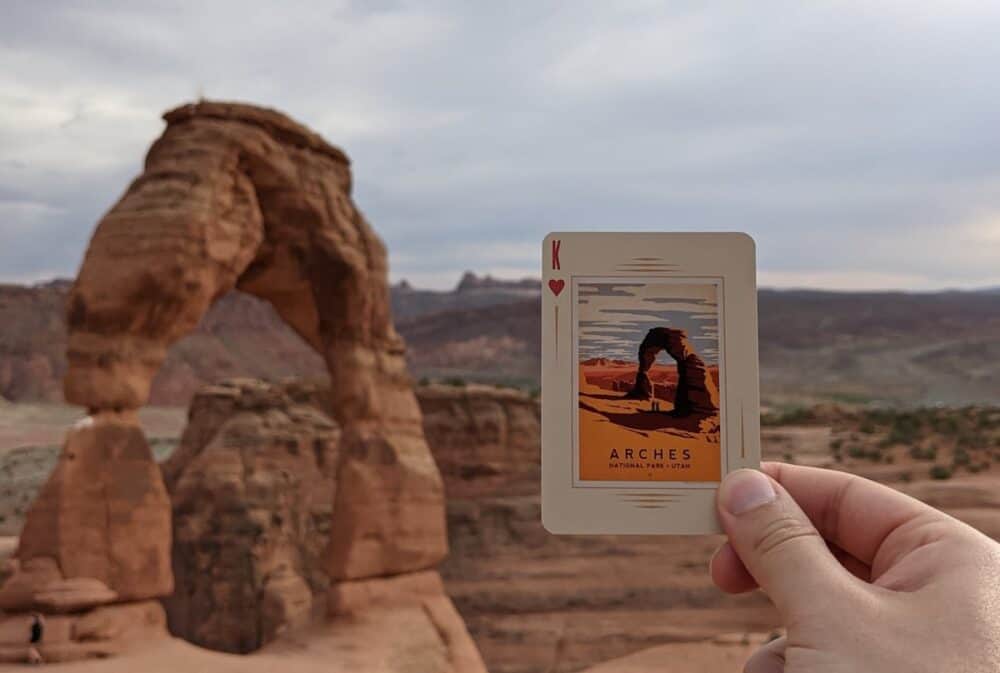
- Length of trail: 3.2 mi/5.1 km
- Difficulty: Moderate
- Estimated time to complete: 2 hours
If you’ve ever been driving behind a car from Utah, you’ve likely seen the trail’s namesake featured on its license plate. The Delicate Arch Trail in Arches National Park is perhaps the most recognized rock formation in the American West.
Arches National Park is home to over 2,000 stone arches, but this particular 46-foot-tall and 32-foot-wide freestanding arch has captivated hikers, artists, and dreamers for centuries. An additional highlight on the path is the nearly 400-year-old petroglyphs created by the Ute Native American tribe near the trailhead.
While the 538-foot elevation gain isn’t particularly challenging, the complete lack of shade can prove a struggle for hikers. If you plan to tackle this hike, bringing plenty of water, sunscreen, and protective clothing is exceptionally important. Much of the trail is covered in slab rock, which can be extremely slippery when wet.
Of all the hikes on this list, this trail is likely to be the most crowded. Due to its popularity, you won’t find the peace and tranquility that other trails offer. No matter how early or late you go, other people will be on the trail. That said, the beauty of the Delicate Arch is still worth seeing in person.
Maroon Bells Scenic Loop – Whitefish National Forest, Colorado
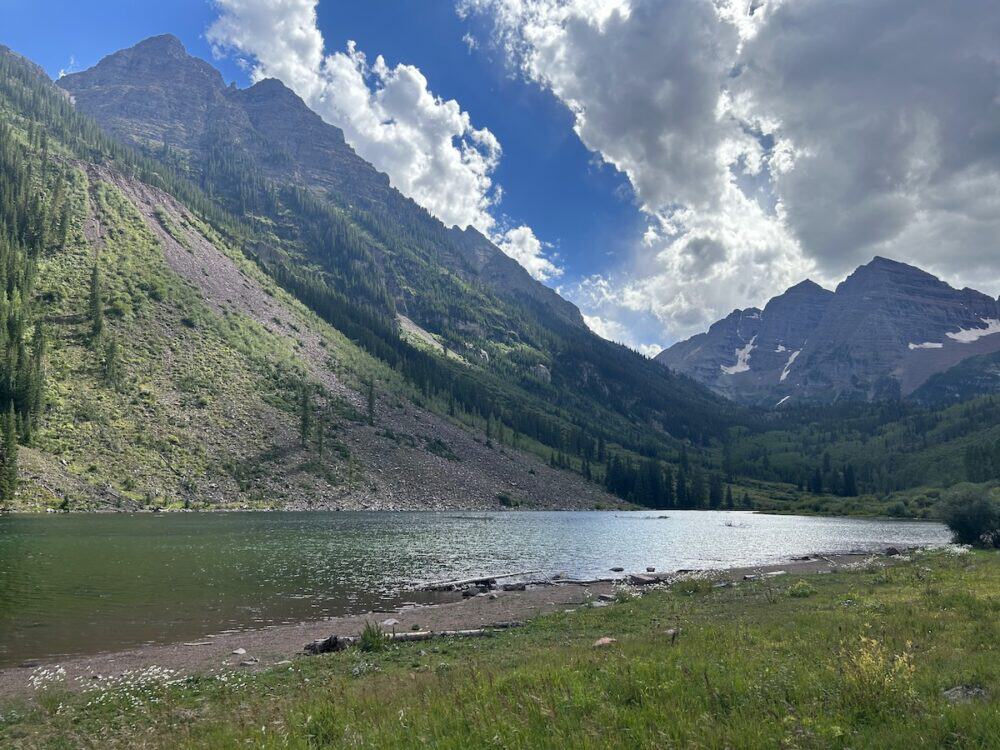
- Length of trail: 1.9 miles/3 km
- Difficulty: Easy
- Estimated time to complete: 1 hour
If you’re looking for a postcard-worthy photo, this is it. The Maroon Bells are one of the most photographed spots in North America. Known for its mesmerizing summer wildflowers, this easy loop trail is accessible only by shuttle from late May to mid-October. The area is also worth visiting when the Aspen trees turn a deep yellow in the fall.
Part of the trail is paved, so guests with accessibility needs can still enjoy the views. For those looking for a short challenge, a second loop takes hikers deeper into the valley. While not a physical challenge, the Maroon Bells Scenic Loop is the most picture-perfect trail on this list.
Mirror Lake via Valley Loop Trail – Yosemite National Park, California
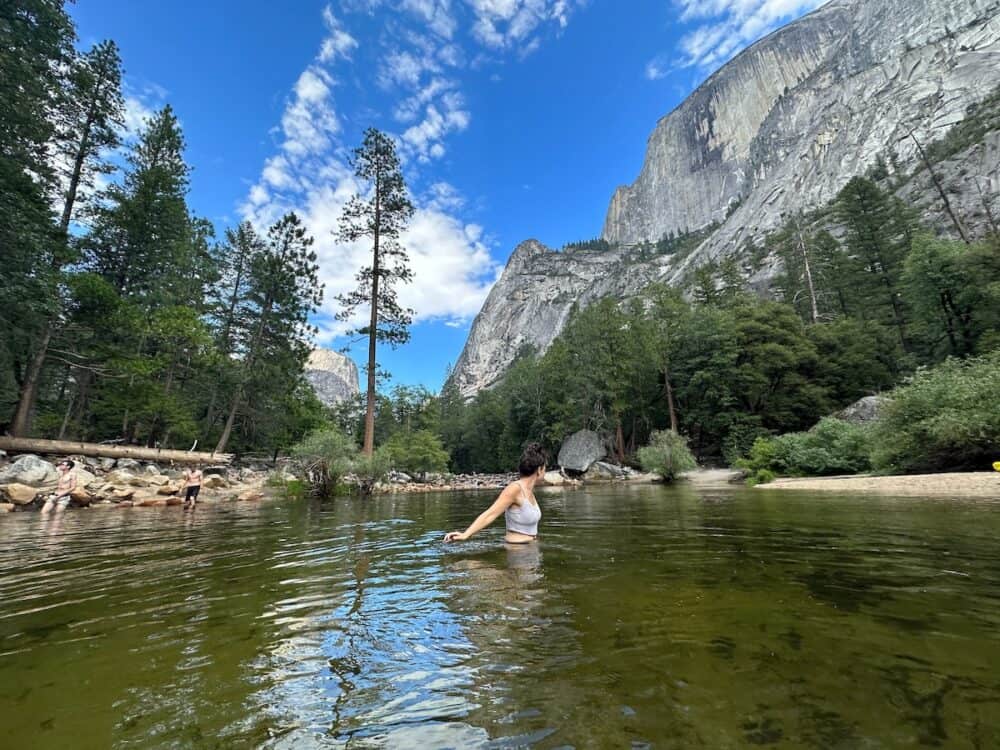
- Length of trail: 4.4 miles/7 km
- Difficulty: Moderate
- Estimated time to complete: 2 hour
The best part of this hike is your reward for doing it: a refreshing dip in the crystal-clear waters of Mirror Lake. This well-shaded and relatively flat path leads explorers to the remaining waters of a once massive glacier lake.
Mirror Lake is slowly disappearing due to sediment accumulation – so enjoy it while we still can! The lake is situated between North and Half Dome and provides a small restroom and places to enjoy a picnic lunch. For the kids and kids at heart, there are countless boulders to climb and sit on within the lake.
If you’re visiting in the winter months, the trail can also be used for snowshoeing. The hike itself only takes 90 minutes or so to complete nonstop, but you’ll want to build in at least a half hour to enjoy swimming in the cold (yet refreshing) waters.
Aztec Butte Trail – Canyonlands National Park, Utah
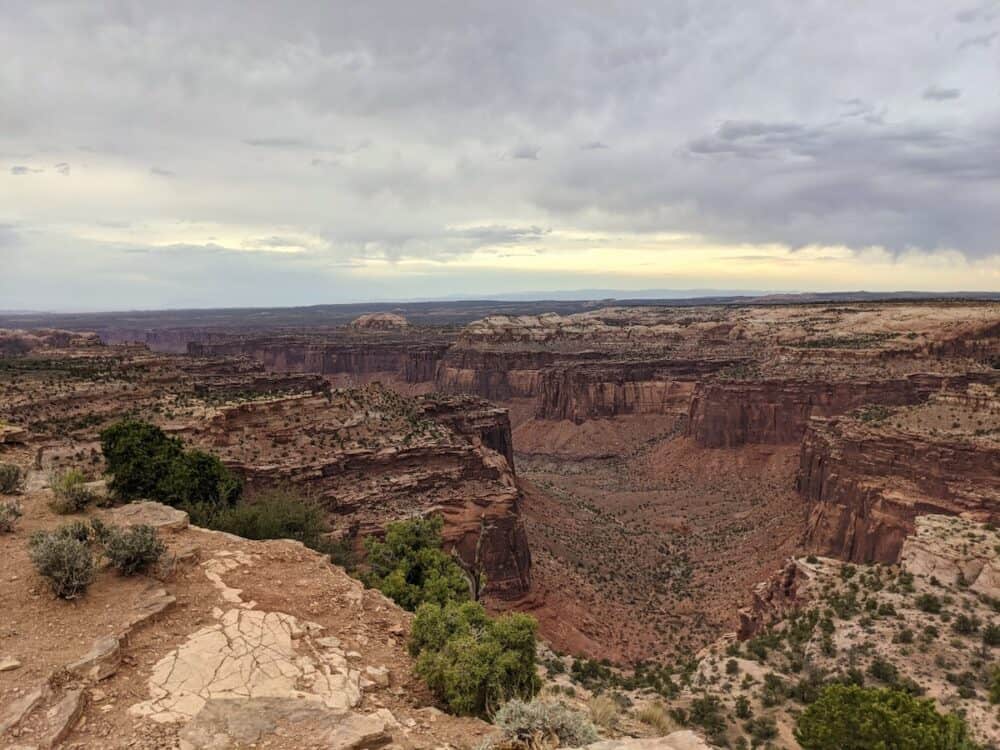
- Length of trail: 1.6 miles/2.5 km
- Difficulty: Moderate
- Estimated time to complete: 45 minutes
Another underrated member of the Big Five is Utah’s Canyonlands National Park. Canyonlands, for some reason, is the least visited of the state’s national parks. Of the 81 hiking trails, the Aztec Butte Trail stands out for its Aztec ruins.
Along this short trail, hikers can visit the ruins of an Aztec home and granary. The area is a bit spooky, but it’s worth the jitters to get up close and personal with these ruins.
In addition to the ruins, explorers can engage in some pretty intense slab (smooth rock) scrambling. You’ll only want to tackle this trail if you have good hiking shoes.
Along the way, you’ll enjoy canyon views that make you feel like you’re actually at the Grand Canyon in Arizona. While short, this hike is exceptionally unique. Plus, Canyonlands is just a 30-minute drive from Arches National Park and the hipster city of Moab.
Bright Angel Trail – Grand Canyon National Park, Arizona
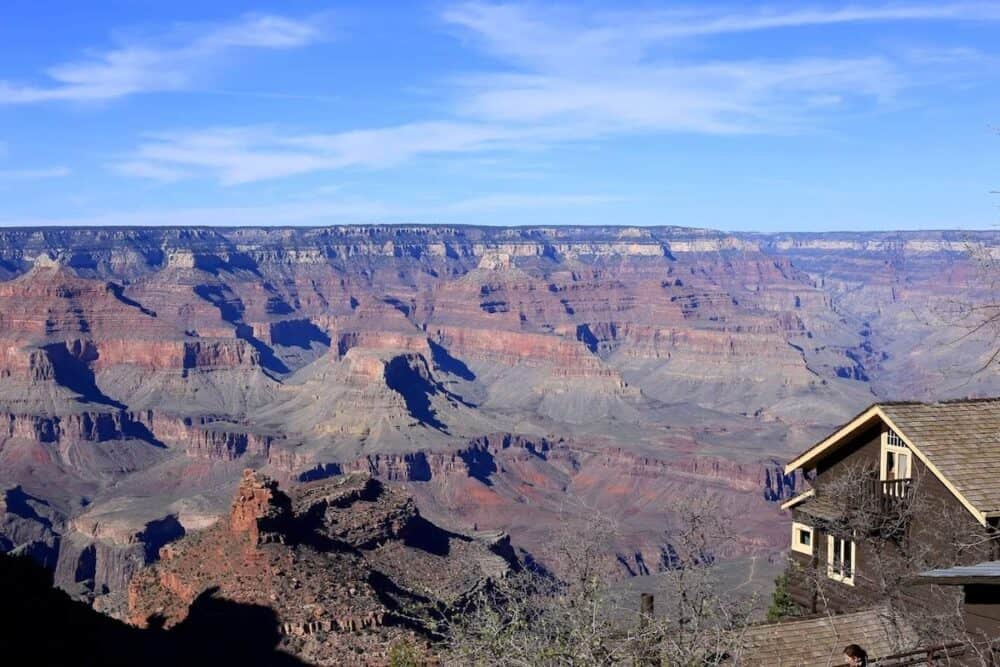
- Length of trail: 15.3 miles/25 km
- Difficulty: Highly challenging
- Estimated time to complete: 7-10 hours
While there are no chained sections to complete, the Bright Angel Trail in Grand Canyon National Park is the most challenging hike on this list. You’ll want to tackle this hike slowly and with careful preparation.
The most dangerous part of this adventure is the potential to run out of water. The first half of your hike is entirely downhill, so you’ll want to ration your food, water, and energy for the 4,478-foot climb back up.
If you start the hike and feel like it’s too intense, a great place to turn around is the “3-Mile Resthouse”. As the name suggests, the resthouse is 3 miles into the hike, so still expect an over 2,100-foot climb back up to the trailhead. The resthouse includes places to fill up your water bottle, toilets, and shady spots for a break. There is even a 1.5-mile resthouse if you’re ready to tap out even earlier.
For those brave enough to conquer the full-day hike, bear in mind that each step down is a step you’ll have to take back up. Go slowly, take lots of breaks, and bring lots of water. Completing this strenuous hike is a one-of-a-kind accomplishment.
Final Thoughts
Visiting one of the United States’s great national parks is one of the best ways to experience what the country offers. Its many protected and untouched landscapes are what truly makes a trip to the U.S. so unique.
From the daredevil heights of Angel’s Landing to the soothing creeks of Cascade Canyon, endless natural beauty is waiting to be explored. Lace up your hiking boots and get out there!
